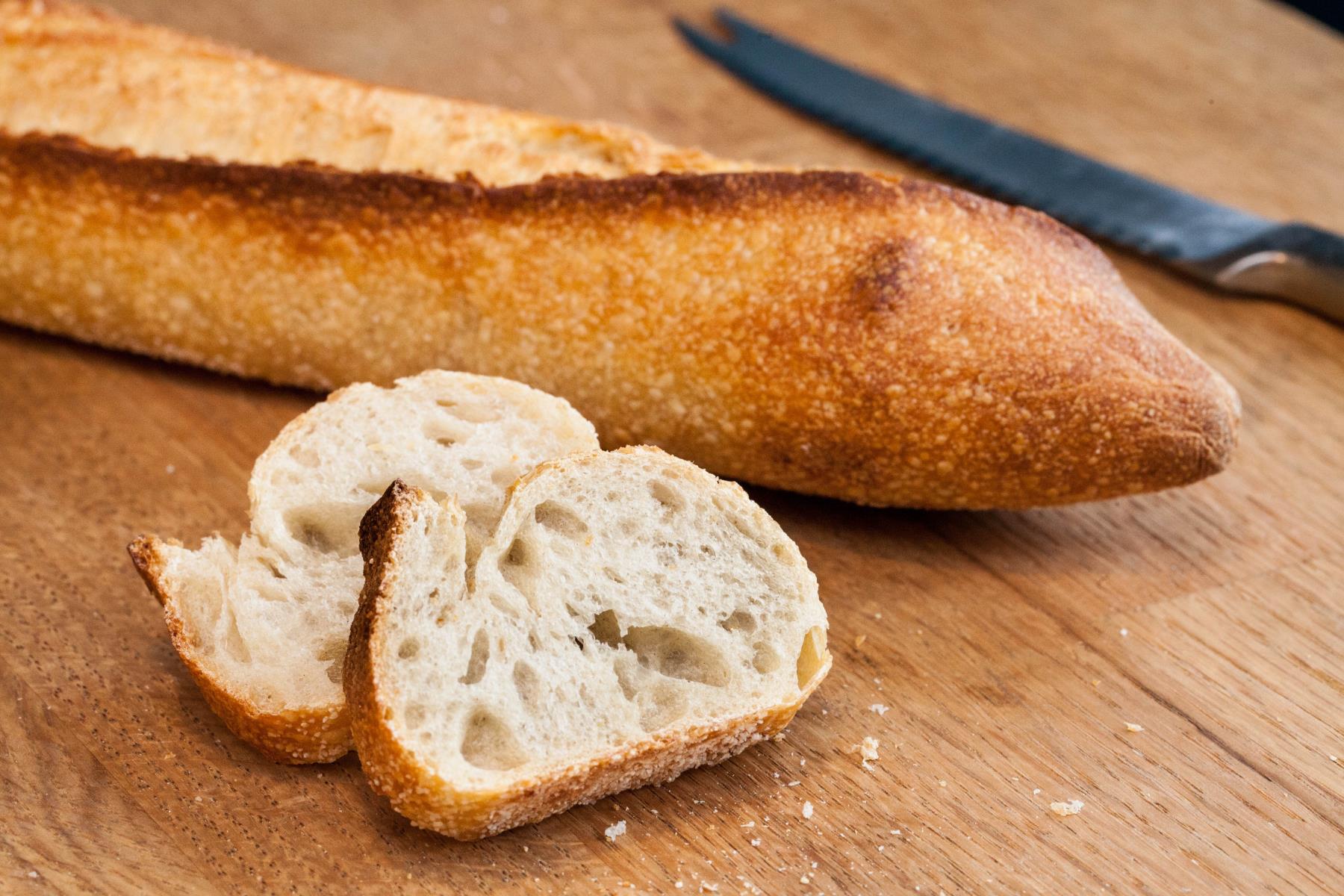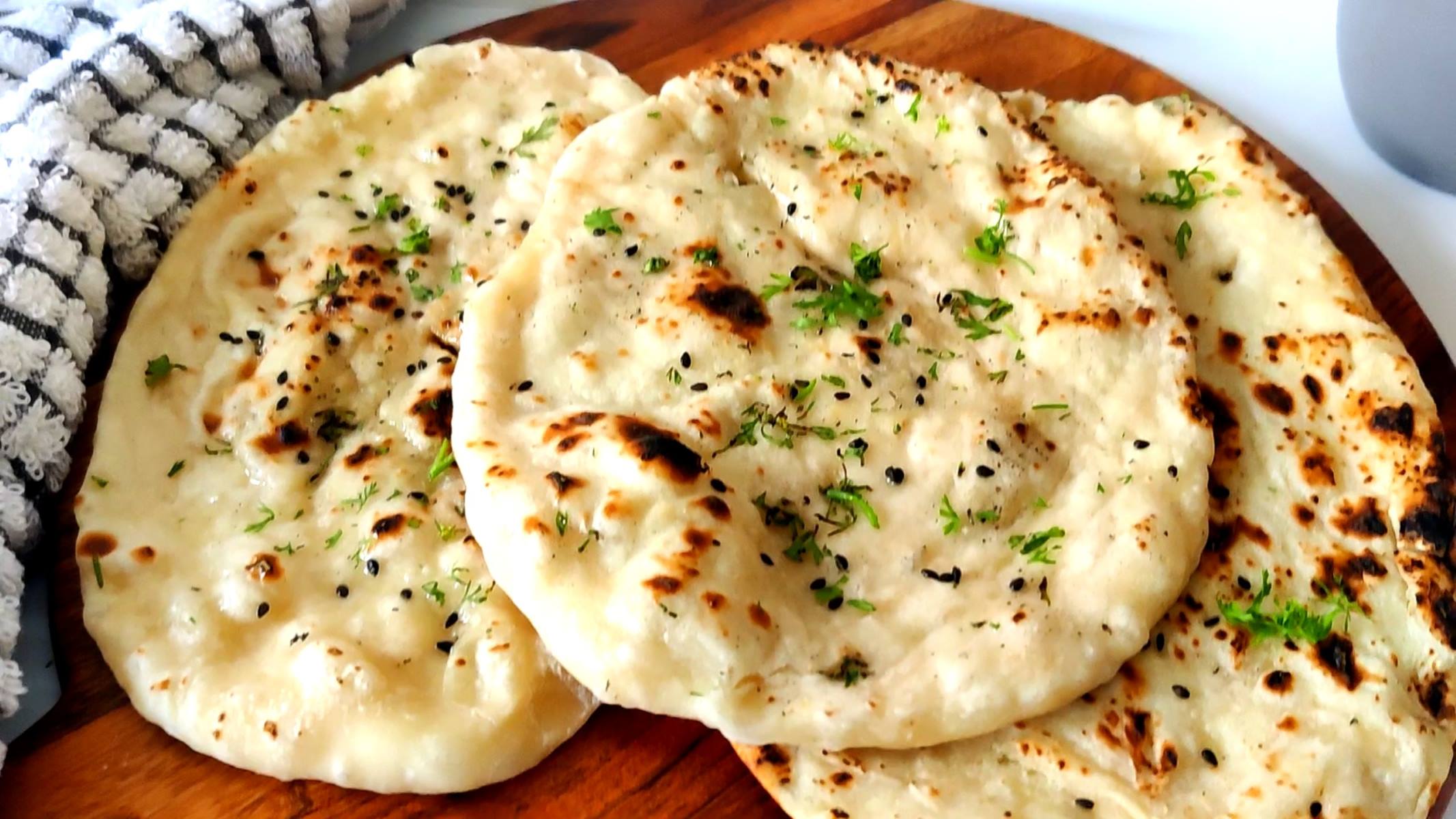Home>Food and Cooking>How To Heat French Bread


Food and Cooking
How To Heat French Bread
Published: February 29, 2024
Learn how to properly heat French bread to perfection with our expert cooking tips and techniques. Elevate your food and cooking skills today!
(Many of the links in this article redirect to a specific reviewed product. Your purchase of these products through affiliate links helps to generate commission for Regretless.com, at no extra cost. Learn more)
Table of Contents
Introduction
Heating French bread to perfection is an art that elevates the dining experience. The tantalizing aroma of warm, crusty bread can evoke feelings of comfort and anticipation, setting the stage for a delightful meal. Whether you're preparing a cozy dinner for two or hosting a gathering with friends, knowing how to heat French bread properly can make a significant difference in the overall enjoyment of the meal.
French bread, with its crisp crust and soft, airy interior, is a beloved staple in many households. However, when it comes to serving this delectable bread, the question often arises: How can you heat it without compromising its delightful texture and flavor? Fortunately, there are several methods to warm French bread, each offering its own unique benefits.
In this comprehensive guide, we will explore various techniques for heating French bread, from using the oven to the microwave and stovetop. Whether you're aiming to revive day-old bread or simply desire a warm accompaniment to your meal, you'll discover the best approach to achieve that perfect warmth and crunch.
By understanding the nuances of each heating method, you can ensure that your French bread emerges from the process with a crispy exterior and a soft, pillowy interior. With the right approach, you can transform ordinary French bread into a delectable treat that complements soups, salads, pasta dishes, and more.
Join us as we delve into the art of heating French bread, unlocking the secrets to achieving that coveted warmth and texture that will elevate your dining experience to new heights. Whether you're a seasoned home cook or a novice in the kitchen, mastering the art of heating French bread will undoubtedly add a touch of culinary finesse to your repertoire.
Read more: How To Warm Up Pita Bread
Choosing the Right French Bread
When it comes to heating French bread, selecting the right loaf is the first step towards achieving a delectable outcome. The ideal French bread for heating should possess certain characteristics that contribute to its overall texture and flavor. Here are some key factors to consider when choosing the perfect French bread for heating:
-
Freshness: Opt for a fresh loaf of French bread, preferably purchased on the same day. Freshness plays a crucial role in the bread's ability to retain moisture and achieve the desired texture when heated.
-
Crust Thickness: Consider the thickness of the crust. A slightly thicker crust can withstand the heating process without becoming overly crunchy or tough, striking a harmonious balance between crispness and chewiness.
-
Texture: Look for a loaf with a soft, airy interior. The presence of large, irregular air pockets within the bread's crumb structure indicates a well-developed, light texture that will respond favorably to heating.
-
Size and Shape: Choose a loaf that suits your heating method. For instance, a longer, slender baguette may be ideal for heating in the oven, while smaller, round loaves could be more suitable for stovetop heating.
-
Ingredients: Consider the ingredients used in the bread. Traditional French bread typically consists of flour, water, salt, and yeast, resulting in a simple yet flavorful profile. Opt for loaves with minimal additives for an authentic taste.
By carefully considering these factors, you can select the perfect French bread that will respond well to the heating process, resulting in a warm, crusty exterior and a soft, pillowy interior that is sure to delight your senses. Whether you're seeking a classic baguette or a rustic boule, choosing the right French bread sets the stage for a truly satisfying culinary experience.
Preheating the Oven
Preheating the oven is a crucial preliminary step when heating French bread to ensure that it emerges with the perfect balance of crispy exterior and soft, warm interior. By preheating the oven, you create an optimal environment for the bread to undergo the heating process, resulting in a delightful texture and enhanced flavor.
To begin, set the oven to a moderate temperature, typically around 375°F (190°C) to 425°F (220°C), depending on the desired level of crustiness and the size of the loaf. Preheating the oven to the appropriate temperature allows for even heat distribution, which is essential for achieving consistent results across the entire loaf.
As the oven reaches the specified temperature, it gradually warms the air inside, creating a stable and uniform heat source. This environment is conducive to transforming the French bread's exterior into a golden, crispy crust while gently warming the interior to a soft, inviting texture.
The preheating process also plays a vital role in preserving the bread's moisture content. By subjecting the loaf to a preheated oven, the initial burst of heat helps seal the exterior, locking in the bread's natural moisture. This prevents the bread from drying out during the heating process, ensuring that it retains its desirable softness and freshness.
Furthermore, preheating the oven allows the bread to undergo a rapid initial rise, resulting in a well-developed crust and a light, airy crumb. This controlled burst of heat sets the stage for the subsequent stages of the heating process, laying the foundation for a perfectly heated French bread with a harmonious contrast of textures.
In essence, preheating the oven is a fundamental step that sets the stage for achieving the desired texture and flavor when heating French bread. By carefully preheating the oven to the appropriate temperature, you create an environment that promotes consistent heat distribution, moisture retention, and optimal crust development, culminating in a warm, inviting loaf that is sure to elevate any meal.
Heating French Bread in the Oven
Heating French bread in the oven is a time-honored method that yields exceptional results, producing a warm, crusty exterior and a soft, pillowy interior that perfectly complements a wide range of dishes. This approach allows for precise control over the heating process, ensuring that the bread emerges with the ideal texture and flavor.
To begin, preheat the oven to a moderate temperature, typically between 375°F (190°C) and 425°F (220°C), depending on the desired level of crustiness and the size of the loaf. Preheating the oven is essential for creating an optimal environment that promotes even heat distribution, resulting in consistent heating throughout the entire loaf.
Once the oven reaches the specified temperature, carefully place the French bread directly on the oven rack or on a baking sheet, allowing for adequate air circulation around the loaf. This positioning facilitates uniform heating, enabling the bread to achieve a golden, crispy crust while retaining its soft, airy interior.
During the heating process, monitor the bread closely to ensure that it reaches the desired level of warmth and crispness. Depending on the size and thickness of the loaf, the heating time may vary, typically ranging from 5 to 10 minutes. Keep a close eye on the bread to prevent over-browning, adjusting the heating time as needed to achieve the perfect balance of texture and color.
As the French bread heats in the oven, the initial burst of heat seals the exterior, locking in the bread's natural moisture and preventing it from drying out. This results in a warm, inviting loaf with a delightful contrast of textures, making it an ideal accompaniment to soups, stews, and pasta dishes.
Once the bread reaches the desired level of warmth and crispness, carefully remove it from the oven, using oven mitts or a kitchen towel to handle the hot baking sheet or rack. Allow the bread to cool briefly before serving, as the interior will retain its warmth, providing a comforting contrast to the crispy crust.
In essence, heating French bread in the oven is a time-tested method that allows for precise control over the heating process, resulting in a warm, inviting loaf with a crispy exterior and a soft, airy interior. By following these steps and exercising attentiveness during the heating process, you can achieve the perfect warmth and texture that will enhance any dining experience.
Heating French Bread in the Microwave
Heating French bread in the microwave offers a quick and convenient method to achieve warm, soft bread with minimal effort. While the microwave may not replicate the traditional oven-baked crustiness, it can effectively warm the bread, making it an ideal option for those seeking a rapid heating solution.
To begin, place the French bread on a microwave-safe plate, ensuring that the loaf is positioned in a single layer to facilitate even heating. It's important to note that heating the bread in the microwave is a relatively swift process, making it essential to monitor the bread closely to prevent over-heating, which can result in a tough or chewy texture.
When heating the French bread in the microwave, it's advisable to use the low or medium power setting to gently warm the loaf without causing excessive moisture loss or undesirable texture changes. Start by heating the bread in short intervals, typically ranging from 10 to 30 seconds, depending on the size and thickness of the loaf.
After each interval, carefully check the bread's warmth and texture, using caution to avoid burning yourself on hot surfaces. Depending on the microwave's power and the bread's initial temperature, the total heating time may vary, typically ranging from 30 seconds to 1 minute.
As the French bread heats in the microwave, the gentle warmth permeates the loaf, resulting in a soft, inviting texture that complements a variety of dishes. Once the bread reaches the desired level of warmth, promptly remove it from the microwave, using caution to avoid touching hot surfaces.
Allow the bread to cool briefly before serving, as the interior will retain its warmth, providing a comforting contrast to the exterior. While the microwave-heated French bread may not possess the same level of crustiness as its oven-heated counterpart, it offers a convenient option for quickly achieving warm, soft bread that can enhance the dining experience.
In essence, heating French bread in the microwave provides a rapid and efficient method to warm the loaf, making it an accessible option for those seeking a quick heating solution. By following these steps and exercising attentiveness during the heating process, you can achieve warm, soft French bread that complements a wide range of culinary creations.
Read more: How To Store Banana Bread
Heating French Bread on the Stovetop
Heating French bread on the stovetop offers a versatile and efficient method to achieve warm, crusty bread with a delightful contrast of textures. This approach provides a convenient alternative to oven heating, allowing for precise control over the heating process and yielding exceptional results that complement a wide range of dishes.
To begin, select a heavy-bottomed skillet or griddle that can accommodate the size and shape of the French bread loaf. Place the skillet or griddle on the stovetop over medium heat, allowing it to preheat gradually to create an optimal surface for heating the bread.
Once the skillet or griddle reaches the desired temperature, carefully place the French bread directly onto the heated surface, ensuring that it makes full contact with the pan. This direct contact facilitates the transfer of heat, resulting in a gradual warming of the bread's exterior and interior.
As the French bread heats on the stovetop, monitor it closely to prevent over-browning or uneven heating. Depending on the size and thickness of the loaf, the heating time may vary, typically ranging from 2 to 5 minutes per side. Use a spatula to gently flip the bread, ensuring that both sides achieve an even, golden crust.
During the heating process, the direct contact with the heated surface creates a beautifully crisp crust while gently warming the interior, resulting in a delightful contrast of textures. The gradual application of heat allows the bread to retain its natural moisture, preventing it from drying out and ensuring a soft, pillowy interior.
Once the French bread reaches the desired level of warmth and crustiness, carefully remove it from the skillet or griddle, using a spatula to transfer it to a serving plate or cutting board. Allow the bread to cool briefly before serving, as the interior will retain its warmth, providing a comforting contrast to the crispy crust.
In essence, heating French bread on the stovetop offers a practical and effective method to achieve warm, crusty bread with a delightful contrast of textures. By following these steps and exercising attentiveness during the heating process, you can elevate any meal with the irresistible appeal of freshly heated French bread.
Serving and Enjoying Warm French Bread
Serving warm French bread is a delightful experience that adds a touch of indulgence to any meal. Once the French bread has been heated to perfection, it's time to savor its irresistible warmth and texture. Whether you're enjoying a casual family dinner or hosting a special gathering, serving warm French bread is a simple yet impactful way to elevate the dining experience.
As you prepare to serve the warm French bread, consider presenting it in a charming bread basket or on a rustic wooden board, adding a touch of visual appeal to the table setting. The inviting aroma of freshly heated bread will undoubtedly pique the senses, setting the stage for a memorable culinary journey.
When it comes to enjoying warm French bread, simplicity often reigns supreme. Consider offering a small dish of high-quality extra virgin olive oil alongside a sprinkle of flaky sea salt for dipping. This classic combination allows the warm bread to be savored in its purest form, highlighting its delicate flavor and airy texture.
Alternatively, you may choose to pair the warm French bread with a selection of artisanal cheeses, cured meats, and olives, creating a delectable spread that encourages communal sharing and convivial conversation. The contrast of the warm, crusty bread with the rich, creamy cheeses and savory charcuterie creates a symphony of flavors that is sure to delight the palate.
For a more formal setting, consider incorporating the warm French bread into a sophisticated appetizer, such as bruschetta or crostini. The crispy exterior and soft interior of the bread provide an ideal canvas for an array of toppings, from ripe tomatoes and fresh basil to creamy goat cheese and caramelized onions. This versatile approach allows the warm bread to take center stage in a refined yet approachable culinary presentation.
As you serve and enjoy warm French bread, remember that the act of breaking bread together holds a timeless significance, symbolizing unity, generosity, and shared nourishment. Whether you're passing the bread around the table or savoring it with loved ones, the simple pleasure of warm, freshly heated French bread has the power to create cherished moments and lasting memories.
In essence, serving and enjoying warm French bread is a celebration of culinary craftsmanship and conviviality, inviting everyone to partake in the simple yet profound pleasure of breaking bread together. By presenting the warm bread with thoughtful accompaniments and savoring it in the company of others, you can transform any meal into a truly memorable and heartwarming experience.














